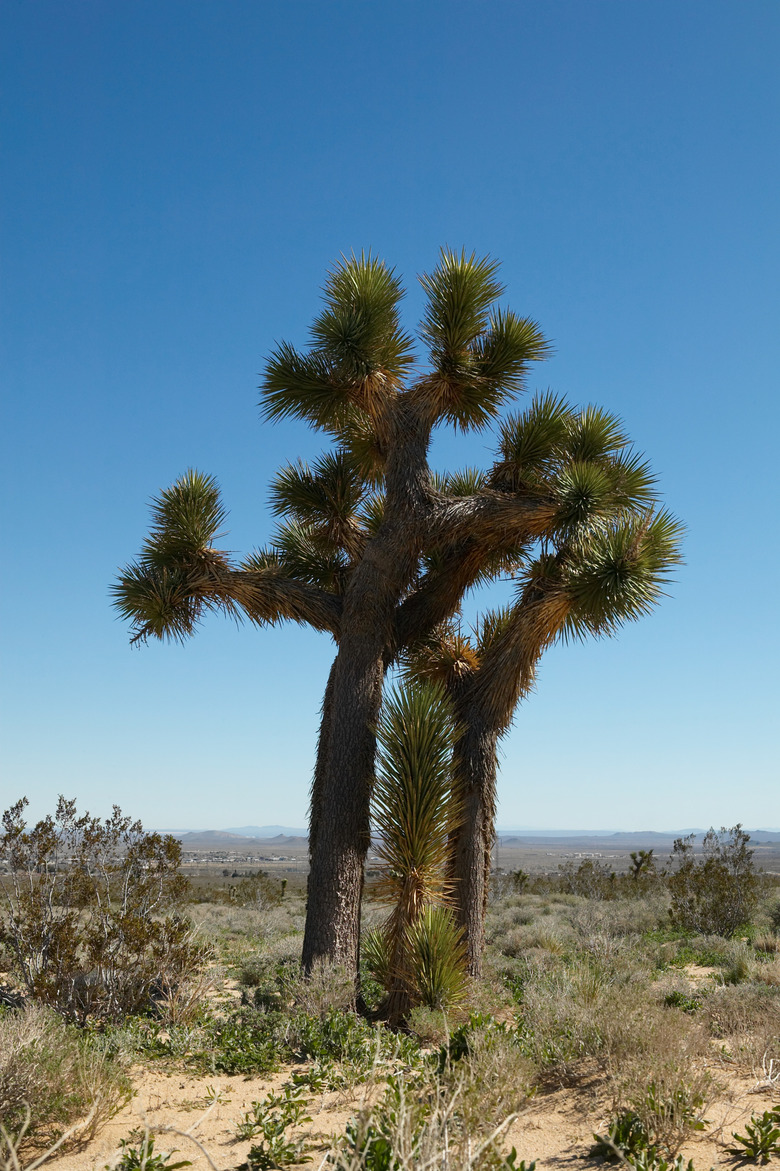What Is The Humidity Of The Mojave Desert?
The humidity of the Mojave Desert changes throughout the day and night and from season to season. Average daytime relative humidity ranges from 10 percent to 30 percent. Nighttime humidity can be as high as 50 percent. Humidity is higher before and after the Mojave's infrequent rainfalls; it tends to rise at night and during cold weather and to drop during the day and in hot weather. These temperature-associated fluctuations are largely a function of how humidity is measured.
Humidity
Humidity
Humidity is evaporated water held by the air — but humidity measurements are not at all straightforward. They are based on relative humidity, which in turn reflects temperature. At any given temperature, the air could hold a specific amount of water vapor — the relative humidity (or humidity measurement) expresses the amount of water vapor in the air as a percentage of the amount the air could hold. When humidity reaches 100 percent, the water vapor precipitates out of the air as rain or snow.
Temperature
Temperature
You're probably familiar with the uncomfortable feeling of being hot and humid. One of the reasons you may be more aware of humidity in hot weather is that relative humidity depends on temperature. The warmer the air is, the more water vapor it can hold without the vapor turning into precipitation, so 50 percent humidity in hot weather really is more "humid" than 50 percent humidity in cold weather.
The Mojave Desert
The Mojave Desert
The Mojave Desert is created by the rain shadow of California's coastal mountain ranges. Its biota, temperature and humidity classify it as a high desert. While it's often defined as simply the area between the Sonoran and Great Basin deserts, the Mojave can be classified in terms of geology and elevation as well as indicator plants, including around 200 known plant species that live nowhere else on Earth. About 1 1/2 million of the Mojave's 29 million acres are a national preserve administered by the U.S. National Park Service.
Relative Humidity
Relative Humidity
The Mojave Desert is a land of temperature extremes and very little precipitation. Forty-degree temperature changes are typical in a single day, with peaks near 120 degrees Fahrenheit and lows significantly below freezing. The California Desert Studies Center has recorded humidity and temperature at the dry Soda Springs site down California's famed Zzyzx Road since the 1980s. According to these measurements, typical summer afternoon humidity is 10 percent and winter afternoon humidity is 30 percent, with humidity highs most winter nights of 50 percent or greater.
The colder the air, the less water vapor it can hold, so similar amounts of water vapor can account for both the low summer relative humidity and higher winter measurements. For example, the Mojave's mean winter temperature is 50 degrees Fahrenheit. At this temperature, the maximum possible humidity is 7.6 grams of water per kilogram of air. Its summer mean temperature is 90 degrees Fahrenheit, with a maximum humidity of almost 30 grams of water per kilogram of air. So winter 30 percent humidity is 2.28 grams of water per kilogram of air, while summer 10 percent humidity translates to 3 grams of water per kilogram of air.
References
Cite This Article
MLA
Libal, Angela. "What Is The Humidity Of The Mojave Desert?" sciencing.com, https://www.sciencing.com/humidity-mojave-desert-19526/. 24 April 2017.
APA
Libal, Angela. (2017, April 24). What Is The Humidity Of The Mojave Desert?. sciencing.com. Retrieved from https://www.sciencing.com/humidity-mojave-desert-19526/
Chicago
Libal, Angela. What Is The Humidity Of The Mojave Desert? last modified March 24, 2022. https://www.sciencing.com/humidity-mojave-desert-19526/
